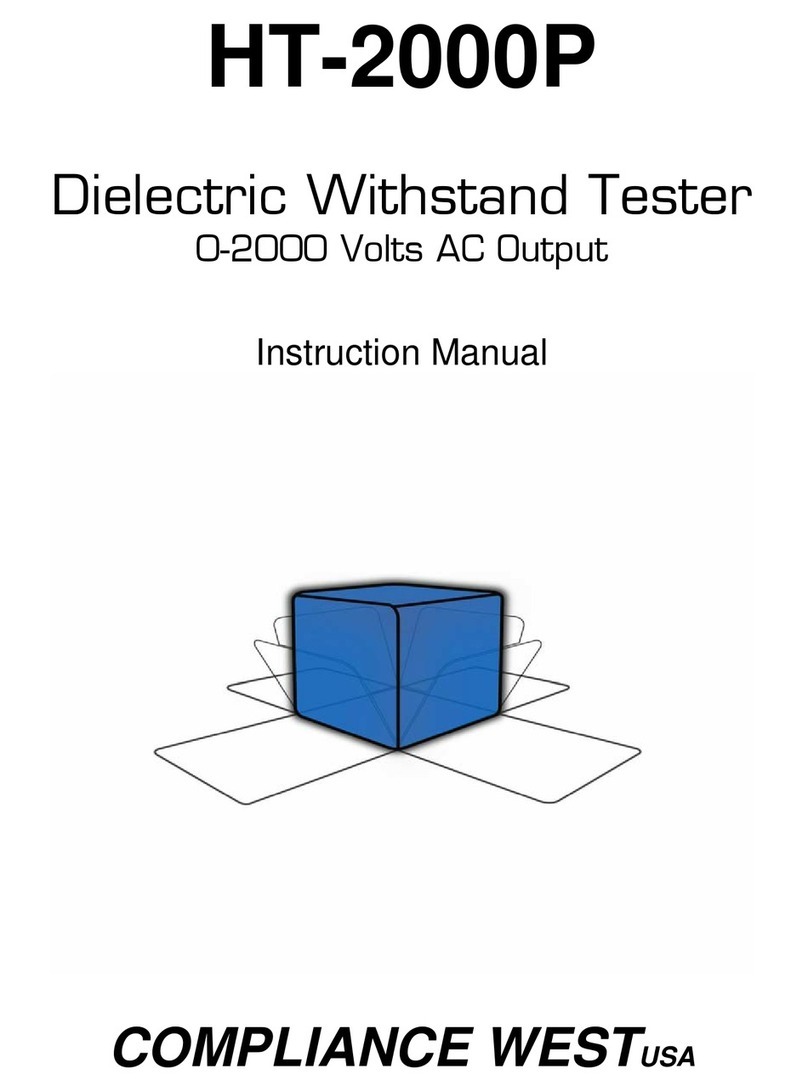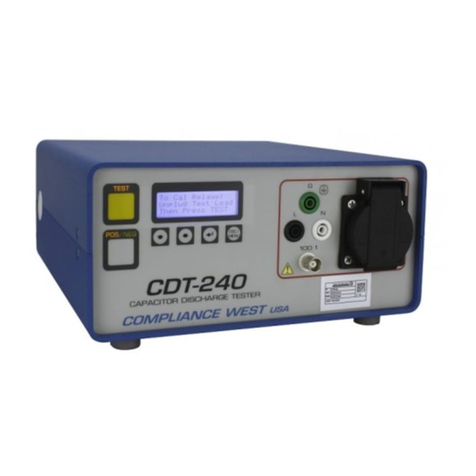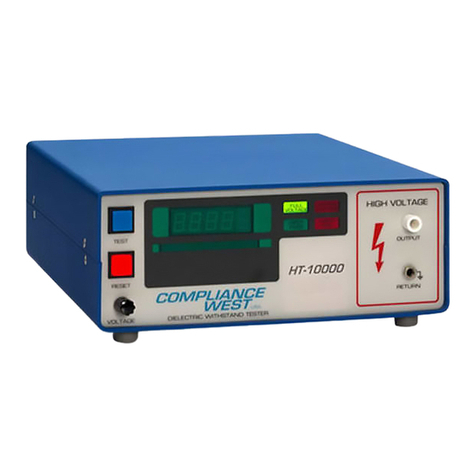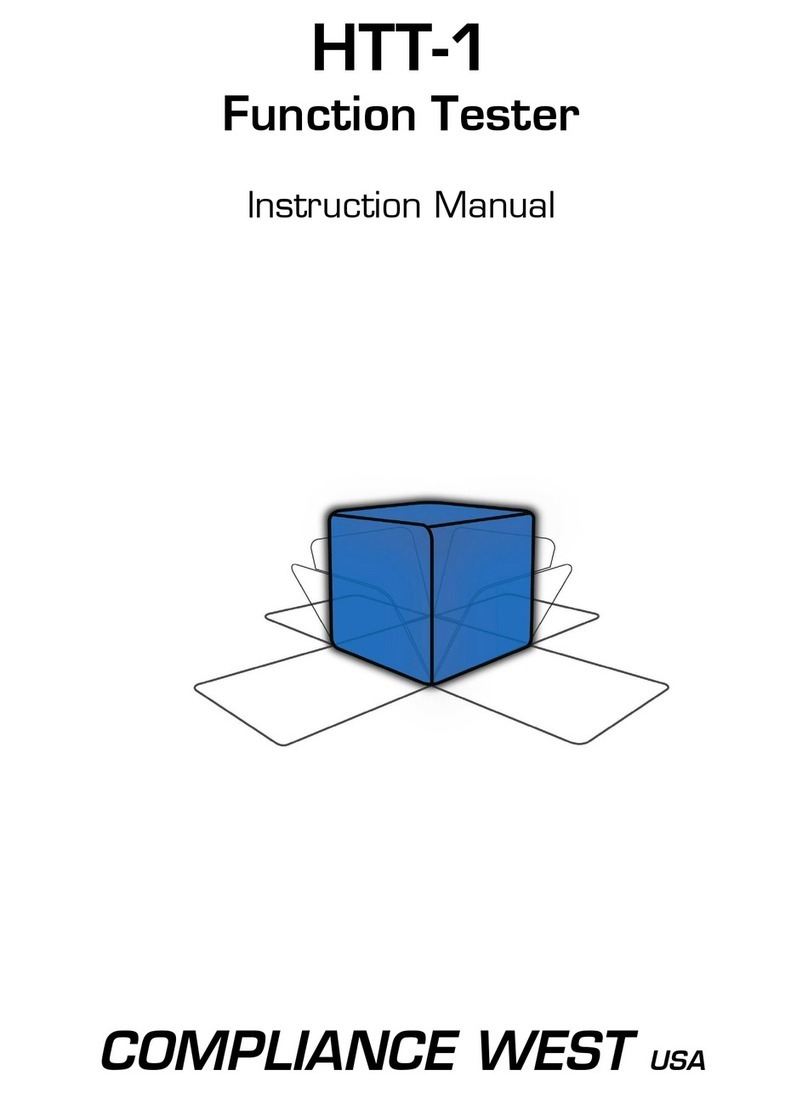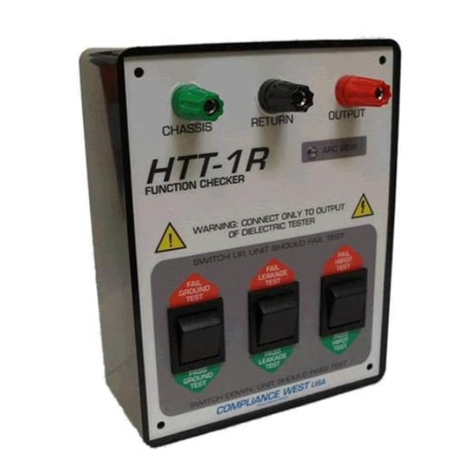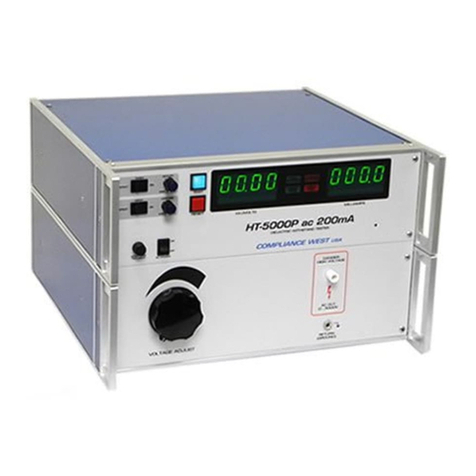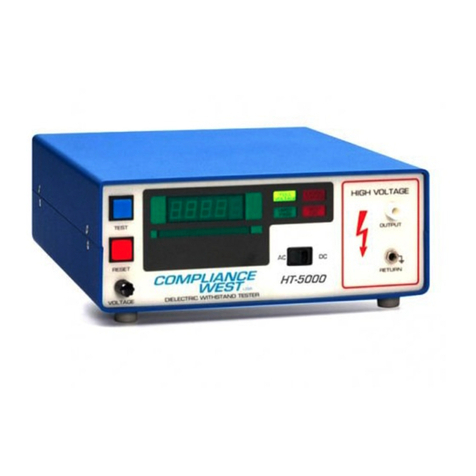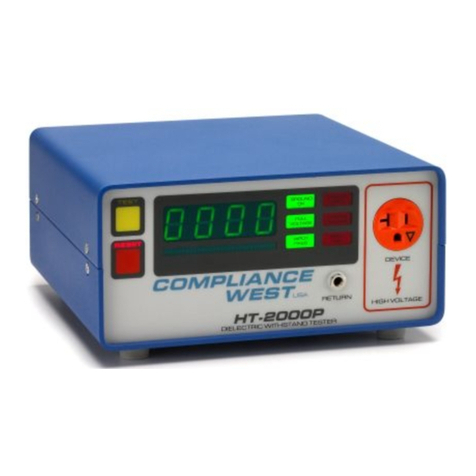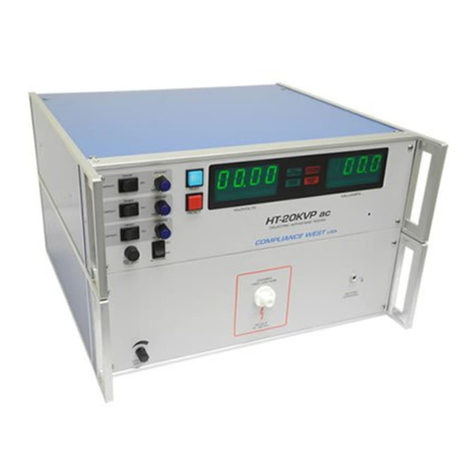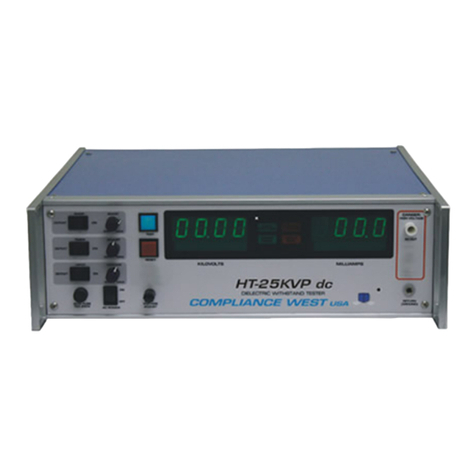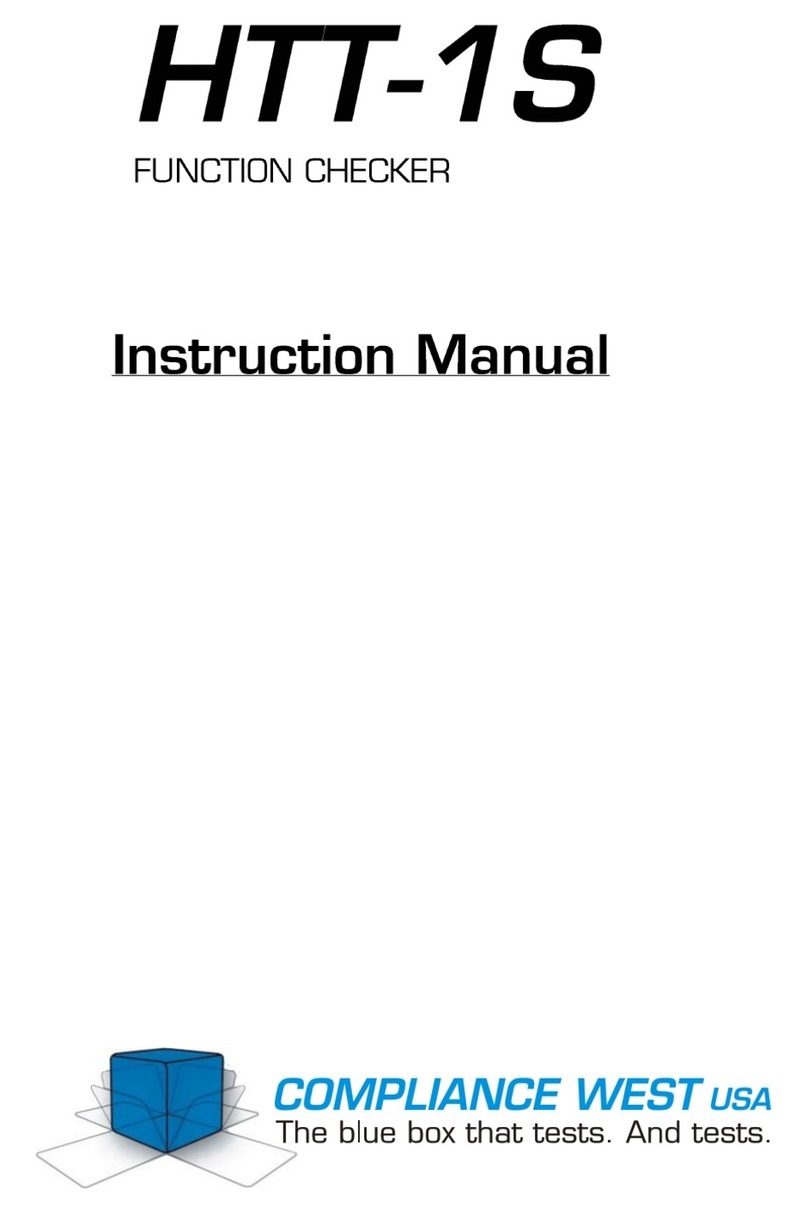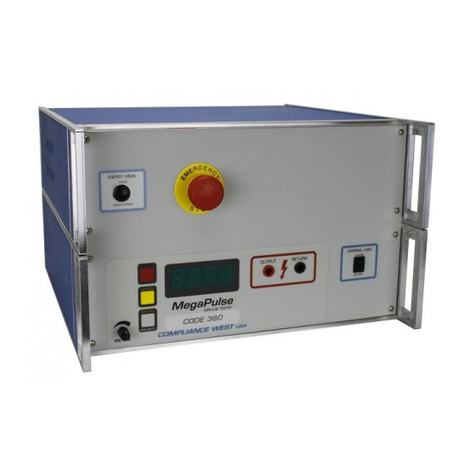
2
power to the Testing Area should be provided with an easily reached shutoff switch which can be actuated
by personnel outside the Area if needed.
Safety Techniques
The high voltage circuit of the HT-3000 can be shut off at any time by pressing the RESET
button.
The HT-3000 has been provided with a Reset switch to provide an unarmed "Standby" setting
when it is energized, but idle. When the red RESET button is lit. the tester will not provide high voltage
until the RESET Button and the Test Button have been pressed in order. To prevent inadvertent operation,
the operator should be instructed not to press the RESET Button until the test is ready.
The HT-3000 is equipped with a Ground Continuity Check which will not allow high voltage to
be applied if the Test Return Lead is not properly connected. This is an important safety feature and
should not be defeated unless two wire products are being tested. In that event, it is imperative that the
operator make absolutely sure the Test Return Lead is properly connected to the equipment being tested. If
the lead is not properly connected, a dielectric withstand test failure may energize exposed dead metal of
the equipment being tested. Additionally, the HT-3000 may not recognize the failure. The test will
continue for its normal length of time, and the HT-3000 may show a "PASS".
The HT-3000 has been designed for one-touch operation with the right hand. If possible, it
should be set up to the left and in front of the equipment under test. The equipment under test should be
connected to the HT-3000 and then left alone by the operator. After the operator is clear of the Tester and
the equipment under test, he should press the RESET Button, then the TEST Button, with his right hand.
This will allow the greatest separation between the operator and the test being conducted.
The HT-3000 is designed to bleed the high voltage away after the test has concluded. In order to
ensure that any voltage present in the equipment being tested has been completely bled away, the operator
should not unplug the equipment under test from the HT-3000 until the front panel meter reads zero volts.
Using the HT-3000 Dielectric Withstand Tester
The dielectric withstand test involves high voltage and caution should be exercised when using
the Tester. The Tester's return lead is connected to ground potential and when properly connected to the
equipment being tested, it will guard against the operator contacting high voltage. Always make sure the
return lead is firmly connected to exposed dead metal. In the sections below, the three tests are discussed.
Ground Check
The Ground check ensures that the grounding pin of the power supply cord is properly connected
to the exposed dead metal of the chassis. If this connection is absent, the exposed dead metal of your
product could be at line potential indefinitely after an internal wiring fault, causing risk of shock to anyone
touching it.
If the green Ground OK LED lights and the test continues, the connection between the grounding
pin and the exposed dead metal of the equipment being tested has a resistance of below three ohms*.
Ground Check Failures
If the red Ground Open LED lights, the buzzer sounds, and the test is terminated. The
connection between the grounding pin of the attachment plug cap and the exposed dead metal of the
chassis has a resistance of greater than three ohms*. This indicates a problem with the connection of the
HT-3000 to the equipment being tested, or that the ground connection in the equipment being tested is
defective. The connection to the tester should be checked by removing the Test Return Lead clip from the
equipment under test and reconnecting it, taking care to make a good connection. The unit should then be
retested. If a failing result is repeated, the connection between the power supply cord ground pin and the
chassis of the equipment being tested should be checked and reworked until a passing result is obtained.

